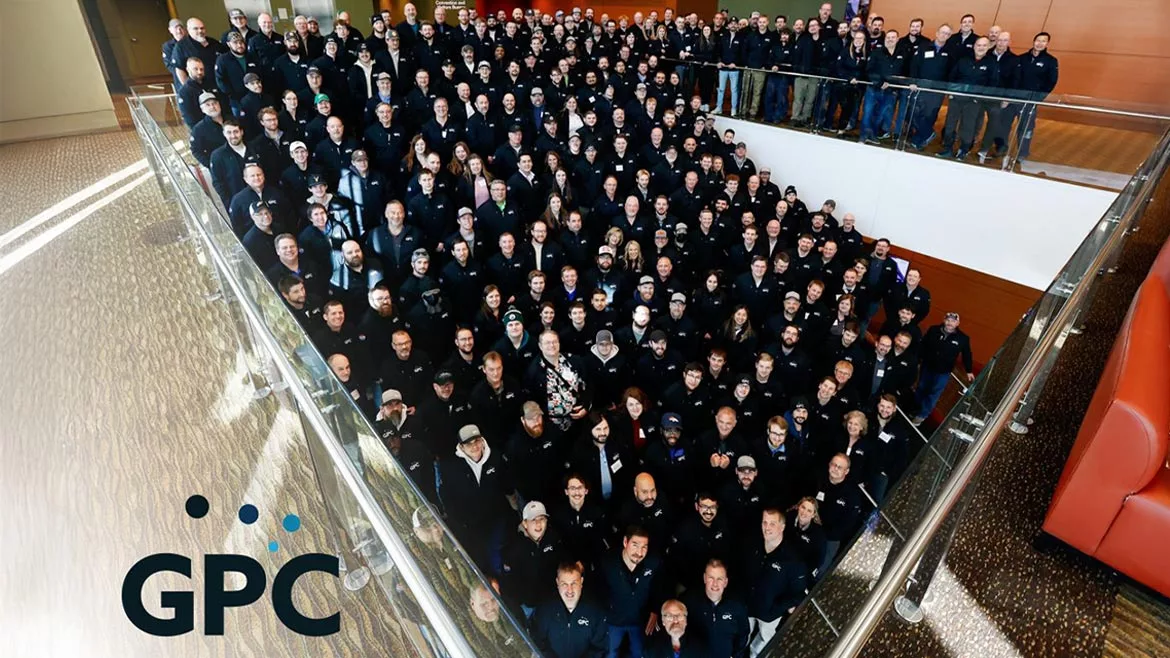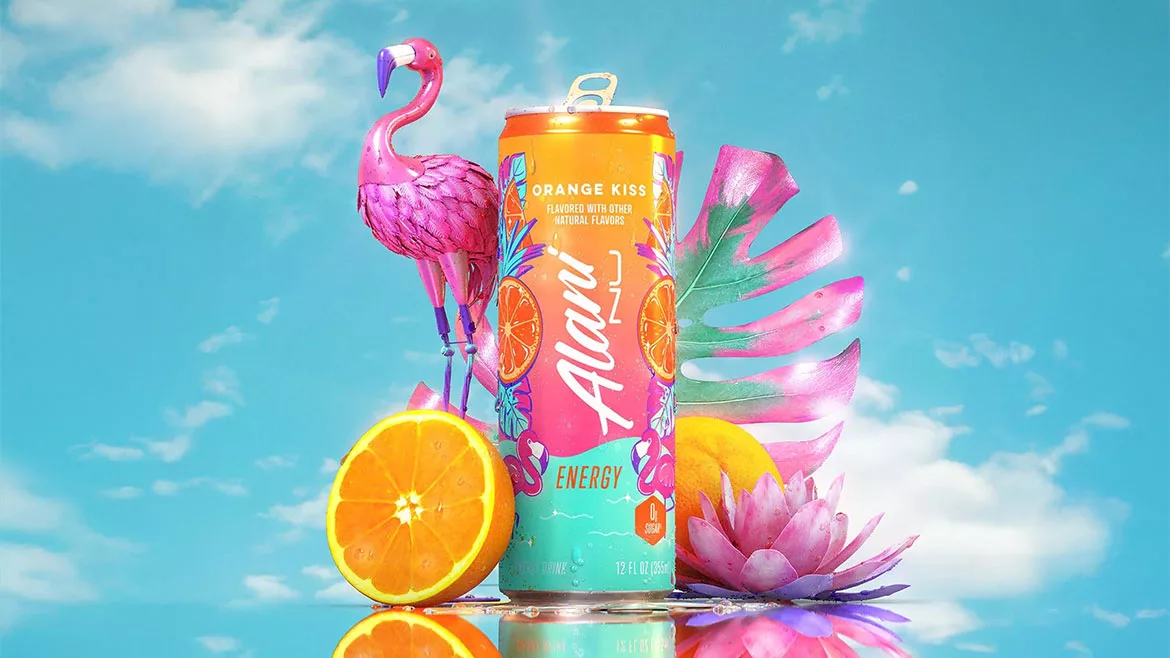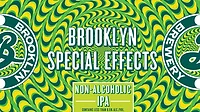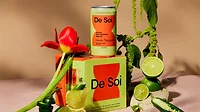Increased interest in low and no alcohol beverages boosts market
Health and wellness prompts more beverage brands to join low, no alcohol category

Image courtesy of Anheuser-Busch
In the country song “The More I Drink,” Blake Shelton sings from the point of view of a man who no longer consumes alcohol. “If I have one, I’ll have 13 / And they can’t get me off the karaoke machine / The more I drink, the more I drink,” Shelton sings.
The song details how a person can get carried away when drinking alcohol, but in the end develops self-control. For varying reasons, consumers have recently re-evaluated their relationship with alcohol, which has led to a boom in new beverages with low or no alcohol.
Brian Sudano, CEO of S&D Insights Inc., Norwalk, Conn., describes how the low and no alcohol market has performed in the past year.
“Both the low alcoholic and non-alcoholic adult beverages, like NA beer and mocktails, along with alcoholic brands such as spirit RTDs (ready-to-drink) and beers like [Michelob] Ultra continue to grow at double digits at the expense of standard spirit and beer offerings,” Sudano says.
Mitch Madoff, head of retail partnerships at New York-based Keychain, notes that the low and no alcohol market has seen significant growth over the past year due to consumers’ increasing priority of health and wellness.
“Advancements in technology and techniques have allowed the low and no alcohol market to take off with the improved taste and experience of ‘better-for-you’ (BFY) alternatives,” Madoff explains. “We’re seeing this trend at Keychain, with spikes in production demand for non-alcoholic brands like Zero Gravity and Ritual Zero Proof.”
To stay ahead in the evolving beverage market, Madoff says that companies can utilize platforms like Keychain to access valuable data on the latest product innovation trends and customer preferences.
“This allows brands to identify the right manufacturers that meet their specific needs, driving overall growth,” he adds.
Madoff shares why he thinks the zero alcohol market has gained steam compared with previous efforts to grow the market.
“Today, millennials and Gen Z are more conscious than ever of the negative impacts alcohol consumption has on their health, which has been amplified by influencers on TikTok and Instagram,” he says. “Many influencers have opened up about their experiences with shifting away from alcohol and now preach a more holistic approach to wellness, often incorporating low and no alcohol beverages into their daily routines.
“As a result, we now see many young adults re-evaluating their relationship with alcohol and embracing a ‘sober-curious’ lifestyle,” Madoff continues. “With these generations increasingly dominating the consumer market, brands must pay attention to trends that resonate with them, like customization, sustainability and wellness.”
S&D’s Sudano states that the market environment is drastically different today than it was pre-pandemic.
“Government agencies campaign against any alcohol consumption, along with greater availability of cannabis and GLP-1 drugs and associated diets, have impacted alcohol consumption,” he says. “Greater focus on overall health has also had an impact. All [of] these have impacted the market.”
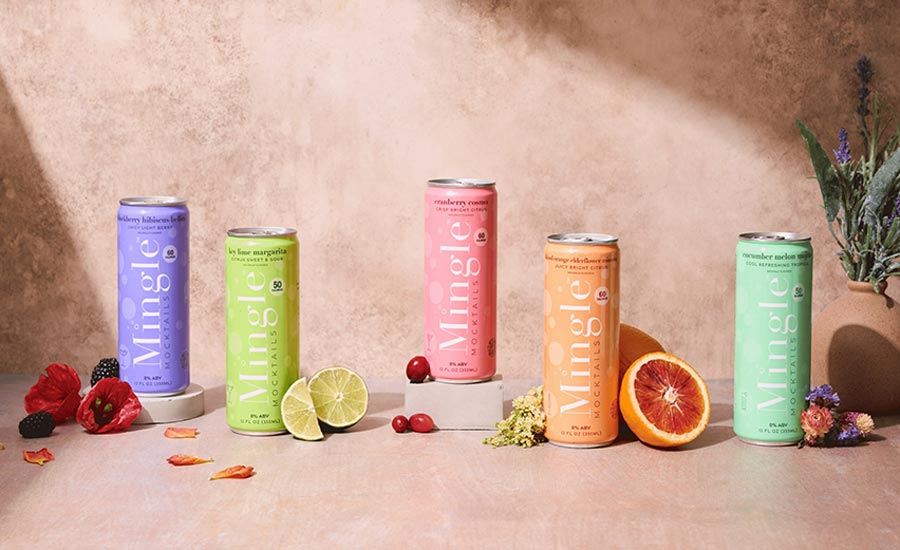
This type of movement occurred in the ‘80s and ‘90s, Sudano notes, but the movement wasn’t sustainable over time.
“It is yet to be seen if this is cyclical or structural change,” he adds.
Cara Piotrowski, client insights consultant for Chicago-based Circana, also credits the boost in zero alcohol to health and wellness trends. Such trends are particularly popular among younger generations, she notes.
“There is more awareness around the health impact of alcohol, with moderation trends gaining momentum in recent years (Dry January, Sober October challenges),” Piotrowski says. “Zero alcohol offerings allow consumers to participate in traditional drinking occasions, and can enjoy the taste of beer, wine or cocktails without the alcohol.”
The rise of RTD cocktails has contributed to growth in the space as well, she adds. There is a wide variety of offerings across flavors and cocktail types, Piotrowski notes, while also meeting the lower alcohol-by-volume (ABV) threshold.
Embracing low and no alcohol
The maturity of the U.S. market for low and no alcohol beverages varies from that of other countries.
Keychain’s Madoff says that other countries across Europe and Asia are far ahead of the United States, with more variations available in the segment. This is largely due to cultural and regulatory practices in these regions, which have long encouraged mindful drinking, he notes.
“The U.S. market has recently hit the ground running with the production of more low and no alcohol products, with brands like Athletic Brewing and Budweiser tapping into this expansion and quickly creating non-alcohol beverages of their own,” Madoff explains. “At Keychain, we’ve seen firsthand how meaningful collaborations between brands and retailers are boosting consumer awareness, improving product accessibility and quality, and driving the overall growth of this category in the U.S. market.”
S&D’s Sudano expresses similar thoughts.
“The NA beer market in the U.S. is less developed than Europe in which it is multiple times bigger,” he says. “In some countries, this movement has yet to take hold.”
Circana’s Piotrowski notes that the movement in the United States is only getting started.
“The low and no alcohol segment is just starting to gain momentum in the U.S., with many scale brewers extending their core brands into the space,” she states. “Brewers dedicated to non-alcoholic offerings are also growing in the U.S. market. The trend has been popular across European countries; notable examples include increased non-alcoholic beer offerings at Oktoberfest in Munich, non-alcoholic beer brand Corona Cero was the official beer sponsor of the 2024 Paris Olympic Games.”
Premiumization is impacting the category as well.
Piotrowski says that beer brands especially are entering the low and no alcohol space, which leads to higher price points. She specifically lists the following offerings: Heineken 0.0, Corona NA, Peroni NA, Athletic Brewing, Samuel Adams Just the Haze NA and Blue Moon NA.
“A similar occurrence is happening with lower ABV RTD cocktails: scale brands are reshaping the segment with strong brand equities driving premiumization, in addition to the rise of lifestyle brands that offer unique flavors,” Piotrowski says.
Keychain’s Madoff says that premiumization has transformed the low and no alcohol market, as it has attracted a larger consumer base through quality, craftsmanship and experience.
“However, replicating the taste of traditional alcohol requires complex ingredients and precise processes, which often makes non-alcoholic versions more expensive or priced similarly to traditional alcohol drinks,” he details. “From where we stand at Keychain, it seems like the low and no alcohol market will only continue to grow, with brands turning to premiumization as a strategy to stand out in the competitive landscape. This approach allows them to place their products at higher price points, offering consumers the unique and elevated drinking experiences they’re looking for.”
S&D’s Sudano feels that premiumization has provided tailwinds to many of the smaller players in the market.
“If the price points for these type of products were compressed due to alcoholic versions being much less expensive, many of these companies would not have survived due to compressed margins,” he shares. “However, the higher price points lead to healthy margins, which can then be reinvested into the brands.”
An alternative offering
Low and no alcohol products offer consumers a different experience than traditional liquid refreshment beverages.
“These products offer consumers opportunities to moderate their alcohol consumption without missing out on the traditional adult drinking occasion,” says Circana’s Piotrowski.
Going forward, she anticipates continued growth in the non-alcohol beer and low-alcohol RTD cocktails segments.
“Non-alcoholic wine is small, but has momentum, and it will likely continue to be a source of growth despite challenges in the broader wine category,” Piotrowski says.
Keychains’ Madoff notes that, compared with traditional beverage alcohol, low and no alcohol options offer similar experiences, but without the negative health implications.
“Today, alcohol plays a large role in many social events, but for those who want to refrain from drinking or are embracing a sober-curious lifestyle, low and no alcohol beverages allows them to participate in social rituals — like celebrating and toasting — without feeling awkward or ‘left out,’” he explains. “And for those who love the taste of regular brews but struggle with the day-after side effects, many non-alcoholic options offer the same flavor experience — without the drawbacks. With similar taste profiles and aesthetic appeals, low and no alcoholic beverages are replacing traditional options for many, while catering to the growing demand for mindful drinking choices.”
Madoff expects that low and no alcohol will continue to dominate the beverage market, mainly as more consumers opt for BFY alternatives.
“Brands will need to adapt to this shift in the industry and understand how they can tap into these trends,” he urges. “Some alcohol brands are already leading the charge, like Anheuser-Busch’s Stella Artois, which has introduced a non-alcoholic version of their iconic beer.”
Today, alcohol plays a large role in many social events, but for those who want to refrain from drinking or are embracing a sober-curious lifestyle, low and no-alcohol beverages allow them to participate in social rituals — like celebrating and toasting — without feeling awkward or ‘left out.'
The product has seen steady year-over-year (YoY) growth in production demand, Madoff notes, highlighting the momentum behind this shift in preference.
S&D’s Sudano explains that an acceleration of a category within adult beverages usually runs for about five years after others jump into the market.
“If the category sticks and changes behavior while offering a similar product benefit, e.g., light beer, this trend can be much longer,” he shares. “Essentially, light beer’s initial benefit was the ability to drink more without being bloated and evolved into a ‘better,’ less calorie alternative with same delivery of alcohol to consumers. This 20-plus year run also included a tremendous amount of advertising and promotion.
“In the case of non-alcoholic offerings, the consumer trend is strong at the moment, but will likely see shifts over the next few years,” Sudano continues. “How it shifts will determine the length and strength of this trend.”
Sudano suspects that the growth of non-alcohol offerings will slow sometime over the next five years. Still, he says now is the time to develop a strong market position that can be defended before the potential shakeout occurs down the road.
Looking for a reprint of this article?
From high-res PDFs to custom plaques, order your copy today!

